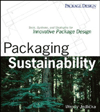Nutritional labeling has been the standard on product labels for years. Consumers expect to see the facts and figures on every can, packet and box at the grocery store. But now, consumers are looking for more than just numbers. They want to see what is behind the content of the package and where it comes from.
The movement toward supply chain transparency is leading consumers to look at the physical makeup of the food product packaging. As a result, they are demanding that restaurants and food brands list their sustainable packaging materials, certifications and sourcing information.
According to a new survey by Asia Pulp & Paper, nearly two-thirds (62%) of Americans want sustainable food packaging, and clear, understandable labeling noting these materials. Not only are consumers paying more attention to what is in their food, they also want to know more about the type of packaging in which their food is wrapped and whether it is sustainably sourced.
To respond to this increased savviness, brands need to be mindful of the role that sustainability plays in consumer decision-making and purchases. They also need to be aware of how perceptions are influenced by corporate environmental practices. These insights can lead to a deeper level of understanding and engagement with customers, which, by extension, can aid overall brand loyalty.
Let’s consider the following trends and what these mean to the food industry:
• Growing consumer demand for sustainability in the food industry. As previously noted, 62 percent of Americans want the food industry to include sustainable packaging information on product labels.
In previous years, consumers may have perceived environmental info on food labels as a “nice to have.” However, as sustainability becomes more of a priority for Americans, the entire food industry must be more focused and attuned to shifting consumer preferences, an awareness that can help inform business planning efforts.
• Movement toward supply chain transparency and sustainable practices. According to the survey, a majority of Americans (51 percent) are more likely to recommend a brand or product if it includes sustainability / environmental-related information. Changing consumer attitudes, paired with business, regulatory and environmental pressures, have prompted world-renowned brands, like McDonald’s and Yum! Brands, to accelerate supply chain transparency and prioritize sustainability. Companies that are better prepared to handle these changes will be in a more competitive position.
The value that Americans are placing on the role of sustainability in packaging and sourcing continues to increase. Efforts to meet this emerging trend must extend into all aspects of a company’s operational and manufacturing processes. Food brands that don’t prioritize the integration of stronger and more transparent environmental practices in their supply chains and products run the risk of suffering from a reputational perspective – which ultimately may lead to reduced dollars.
About the Author
Ian Lifshitz is the sustainability director for the Americas for Asia Pulp & Paper Group (APP). He is responsible for leading the company's sustainability and related stakeholder engagement programs across Canada, the United States, and South America. Ian is also charged with leading the company's North American CSR activities, translating and communicating many of APP's successful conservation, biodiversity and social community programs to North American audiences.












